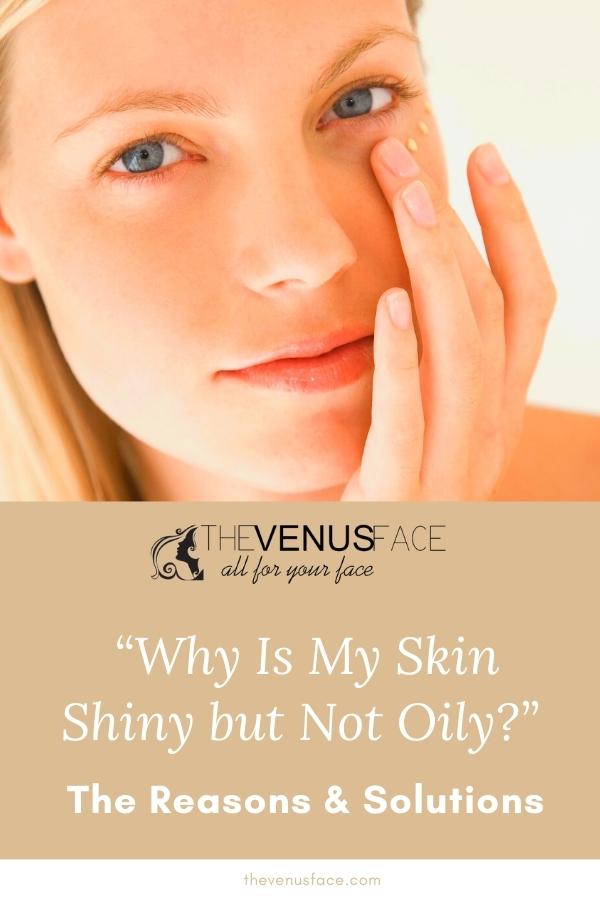Dealing with skin issues can often feel like navigating a maze. If you’ve found yourself staring into the mirror and wondering, “Why is my skin shiny but not oily?” you’re not alone. Many individuals, particularly those in their teens and twenties, experience this peculiar skin phenomenon. Understanding the underlying reasons and how to manage them is essential for achieving that coveted, balanced complexion.
1. Understanding Skin Types
The foundation of resolving any skin-related concern is knowing your skin type. The four primary categories are normal, dry, oily, and combination. Shiny skin typically suggests a higher oil production, but it’s not always that straightforward. For some, the shine may stem from factors that do not involve excessive oil. Identifying your skin type enables you to pinpoint potential causes of shininess without unnecessary trial and error.
2. Sebum Production Explained
Sebum, the natural oil produced by your skin, plays a pivotal role in maintaining hydration and protecting against external elements. An overactive sebaceous gland can lead to a shiny appearance. However, some may experience a shiny complexion without the undesirable greasiness. This can occur when the skin is adequately hydrated yet still produces enough sebum to create that reflective glow.
3. The Role of Moisturizers
Your skincare routine, particularly the products you apply, profoundly influences your skin’s texture and sheen. Moisturizers designed for hydration can contribute to a shiny feel without imparting additional oiliness. Look for gel-based or water-based moisturizers that provide hydration without clogging pores. Ingredients like hyaluronic acid can help lock in moisture without resulting in a greasy finish.
4. Hydration vs. Oiliness
It’s crucial to understand that hydration and oiliness are not synonymous. Dehydrated skin can lead to a compensatory increase in oil production, resulting in a shiny appearance. Conversely, skin that is well-hydrated often shines beautifully without the heavy feel of frequent oiliness. Using light, oil-free products can ensure that your skin retains moisture without appearing greasy.
5. Environmental Factors
Your environment can significantly affect your skin’s appearance. High humidity, for instance, can lead to increased perspiration and a certain glow that might be misconstrued as oiliness. Similarly, exposure to sunlight and pollutants can trigger your skin’s oil production in a bid to protect itself. Recognizing these external factors is paramount for a successful skincare regimen tailored to your lifestyle.
6. The Impact of Diet
Your diet cannot be overlooked when discussing skin health. High sugar and refined carbohydrate intake can lead to inflammation and exacerbate oil production. On the flip side, consuming a balanced diet rich in antioxidants, vitamins, and healthy fats can improve skin resilience and promote a luminous, non-greasy glow. Foods rich in omega-3 fatty acids, such as salmon and walnuts, nurture skin health from the inside out.
7. Hormonal Influences
Hormonal fluctuations, particularly during menstruation or hormonal treatments, can dramatically impact your skin’s condition. Changes in hormone levels can lead to variations in oil production, sometimes resulting in unexpected shininess. Monitoring these hormonal shifts allows for more effective management of your skin’s appearance and overall health.
8. The Importance of Exfoliation
Exfoliating regularly is crucial for maintaining a balanced complexion. Dead skin cells can accumulate and contribute to a dull appearance, prompting extra oiliness as the skin attempts to remedy the lack of brightness. Incorporating gentle exfoliants can help provide a fresh, radiant glow while preventing the build-up of excess oil. Be sure to choose products suitable for your skin type to avoid irritation.
9. Acne and Other Skin Conditions
Sometimes, shininess can be a symptom of underlying skin conditions like acne or rosacea. Acne-prone skin can experience an increase in both shine and bumps due to the clogging of pores with excess sebum. Identifying skin conditions early and consulting a dermatologist for tailored treatment plans can significantly improve your complexion. This proactive approach helps curb potential issues before they escalate.
10. Finding the Right Products
Navigating the vast array of skincare products can be overwhelming, especially when shopping for a shine-free solution. Look for non-comedogenic labels on your skincare products, which indicate they won’t clog pores. Opt for products containing clay, salicylic acid, or tea tree oil to help control excessive shine without drying out your skin. A well-curated skincare routine can promote a naturally luminous look without unwanted greasiness.
11. Embracing Your Natural Glow
While it’s important to address concerns regarding shininess, it’s equally vital to embrace the natural glow of your skin. A degree of shine can signify health and hydration, qualities that many aspire to achieve. Instead of striving for mattified skin, focus on finding balance—embracing a look that is bright and healthy while minimizing excessive greasiness.
Conclusion
Navigating the complexities of skin shine but not oiliness can feel overwhelming, but understanding the multifaceted causes enhances your ability to manage it effectively. Utilize a balanced diet, suitable skincare products, and regular routines to maintain your skin’s natural beauty. Consult with dermatologists for personalized advice to ensure your complexion remains vibrant and healthy as you embrace the beauty of youth.

